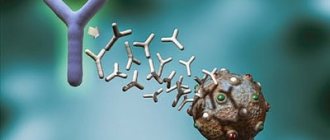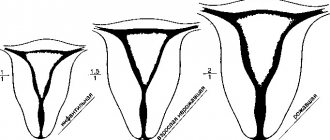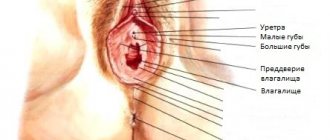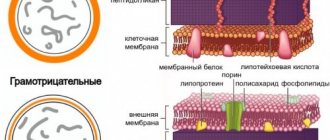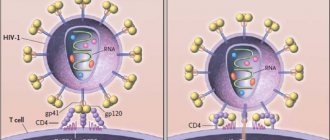The calendar method of birth control (also known as the Ogino-Knaus method) refers to biological methods of contraception. It does not require the use of any mechanical or chemical means, is absolutely safe and has no side effects. Unwanted pregnancy can be avoided by abstinence during “dangerous” (fertile) days, when there is a maximum chance of conception. However, the reliability of calendar contraception is not as high as we would like. According to various sources, it ranges from 60 to 91%.
When was the calendar method of contraception invented?
This technique was developed almost 100 years ago. She owes her appearance to the Japanese gynecologist Kyusaku Ogino and his Austrian colleague Hermann Knaus. The first calculated the optimal days for conceiving a child, and the second, after some minor remarks, proposed using this knowledge for contraception, which he announced in 1928 at the Congress of Obstetricians. Since then, the “science” of how to protect yourself using the calendar method has been mastered by more than one generation. This method, despite the fact that it is outdated, is still used by some.
Sources
- Du X., Liu J., Xue Y., Kong X., Lv C., Li Z., Huang Y., Wang B. Alteration of gut microbial profile in patients with diabetic nephropathy. // Endocrine - 2021 - Vol - NNULL - p.; PMID:33905112
- Zhou X., Liu X., Liu H., Dou S., Chen K., Zhang X., Wang W., Wang X., Che J. CD36+/CD61+ Microparticles Correlate with the Risk of Percutaneous Cardiac Interventions in Coronary Artery Disease Patients and the Effects of Ticagrelor. // Cardiovasc Drugs Ther - 2021 - Vol - NNULL - p.; PMID:33893936
- Smiley CL., Rebeiro PF., Cesar C., Belaunzaran-Zamudio PF., Crabtree-Ramirez B., Padgett D., Gotuzzo E., Cortes CP., Pape J., Veloso VG., McGowan CC., Castilho JL . Estimated life expectancy gains with antiretroviral therapy among adults with HIV in Latin America and the Caribbean: a multisite retrospective cohort study. // Lancet HIV - 2021 - Vol - NNULL - p.; PMID:33891877
- Sun N., Meng X., Liu Y., Song D., Jiang C., Cai J. Applications of brain organoids in neurodevelopment and neurological diseases. // J Biomed Sci - 2021 - Vol28 - N1 - p.30; PMID:33888112
- Chen Y., Li H., Yang J., Zheng H., Guo L., Li W., Yang Z., Song J., Liu L. A hSCARB2-transgenic mouse model for Coxsackievirus A16 pathogenesis. // Virol J - 2021 - Vol18 - N1 - p.84; PMID:33882964
- Zheng X., Kuang J., Lu C., Deng Q., Wu H., Murithi RG., Johnson MB., Peng W., Wu M. Preconceptional and prenatal exposure to diurnal temperature variation increases the risk of childhood pneumonia. // BMC Pediatr - 2021 - Vol21 - N1 - p.192; PMID:33882898
- Liu Z., Wang R., Zhou J., Zheng Y., Dong Y., Luo T., Wang X., Zhan W. Ultrasound lymphatic imaging for the diagnosis of metastatic central lymph nodes in papillary thyroid cancer. // Eur Radiol - 2021 - Vol - NNULL - p.; PMID:33881571
- McCann-Pineo M., Taioli E., Schwartz RM. Exposure to Hurricane Sandy and Risk of Opioid Abuse. // Subst Use Misuse - 2021 - Vol - NNULL - p.1-5; PMID:33870867
- Du HJ., Zhao SX., Zhao W., Fu N., Li WC., Qin XJ., Zhang YG., Nan YM., Zhao JM. Hepatic Macrophage activation and the LPS pathway in patients with different degrees of severity and histopathological patterns of drug induced liver injury. // Histol Histopathol - 2021 - Vol - NNULL - p.18340; PMID:33870482
- Wang J., Qian R., Wang Y., Dong M., Liu X., Zhou H., Ye Y., Chen G., Chen D., Yuan L., Xiao J., He G., Hu J ., Zeng W., Rong Z., Zhang Q., Zhou M., Jin J., Fan J., Sun J., Ma W., Zhang B., Liu T. The mediation effect of placental weight change in the association between prenatal exposure to selenium and birth weight: Evidence from a prospective birth cohort study in China. // Environ Epidemiol - 2021 - Vol5 - N2 - p.e139; PMID:33870013
Calendar method: how to protect yourself correctly?
Many people are sure that in order to avoid an unwanted pregnancy, you need to abstain from sex for a couple of days during ovulation (the release of an egg from the ovary). But that's not true. The Ogino-Knaus method is not so simple and requires taking into account several scientific facts at once.
- Ovulation (the release of an egg from the ovary) occurs in the middle of the menstrual cycle. For the vast majority of women, it lasts 28 days, which means that the egg reaches maturity and becomes ready for fertilization on the 14th - 15th day.
- Ovulation lasts 24 - 36 hours. Conception is possible only during this period.
- The sperm lives on average 2 - 3 days, but some “long-livers” manage to complete their “mission” even 8 days after sexual intercourse.
Thus, to prevent pregnancy, you need to avoid unprotected sex not only on the expected days of ovulation, but also at least a week before it.
Calendar method of protection: how to calculate the “dangerous” period?
- Arm yourself with records of the length of your menstrual cycles over the past 6 to 12 months.
- Determine the shortest cycle. For example, it lasted 25 days. Subtract 18 from this number. You get 7.
- Now notice the longest cycle. Let's say it lasted 32 days. Subtract 11 from this number. You get 21.
- Draw conclusions. In this example, “dangerous” days last 7 to 21 days of the menstrual cycle, which means that during this period you can conceive a child. The first days after menstruation and the week after the 21st day of the cycle can be called relatively “safe”.
- Please note that the calendar method of birth control is unreliable. Ovulation may occur earlier or, conversely, later than usual.
Types of physiological methods
Biological (physiological) or natural methods of family planning (EMFP) include: calendar (or rhythmic), temperature, cervical mucus method, symptothermal (a combination of the two methods listed above), coitus interruptus, lactational amenorrhea method (physiological suppression is observed during lactation ovulation due to the baby sucking at the breast), abstinence (abstinence from sexual intercourse).
Calendar (rhythmic) method of contraception
To determine the fertile phase, it is necessary to analyze at least 6-12 menstrual cycles. During this period, it is necessary to abstain from sexual activity or use barrier methods of contraception. When analyzing the menstrual calendar for 6-12 months, the shortest and longest cycles are distinguished. The number 18 is subtracted from the number of days of the shortest one and the day of the beginning of the “dangerous” period is obtained, and the number 11 is subtracted from the number of the longest menstrual cycle and the last day of the “dangerous” period is found out. Let us give an example of calculating the “dangerous” period with a constant menstrual cycle of 28 days.
- Beginning of the “dangerous” period: 28 - 18 = 10th day of the cycle.
- End of the “dangerous” period: 28 - 11 = 17th day of the cycle inclusive.
- The duration of the “dangerous” period is 8 days. It begins on the 10th day of the menstrual cycle and ends on the 17th day.
Attention! This method can be used only with strict accounting of all menstrual cycles in the calendar and with a small spread of the menstrual cycle throughout the year. If you have not marked the duration of the menstrual cycle on the calendar for 6-12 months and cannot say with certainty about the stability of the cycle, then this method is not suitable for contraception, as well as for counting the most favorable days for conception.
Temperature method of contraception
The temperature method of contraception is based on determining the time of rise in temperature in the rectum ( basal temperature ). It is known that at the moment of ovulation the temperature in the rectum decreases, and the very next day it increases. By measuring basal temperature for several (at least three) months and abstaining from sexual intercourse in the first phase of the menstrual cycle, including the first three days of temperature rise after ovulation, a woman will be able to determine when she ovulates. The effectiveness of the method depends on the accuracy of determining the date of ovulation. Therefore, it is necessary to measure the temperature, observing the following rules: always in the morning, within 10 minutes, immediately after waking up, without getting out of bed, using the same thermometer and with your eyes closed, since bright light can provoke the release of certain hormones and contribute to changes in basal temperature . The thermometer is inserted into the rectum to a depth of 4-6 cm. The temperature value is noted on the graph. Basal temperature chart (see chart 1): normal from the very beginning of the menstrual cycle (its duration is calculated from the first day of the previous menstruation to the first day of the next one) and before the onset of ovulation, the basal temperature is below 37 degrees C and can fluctuate within small limits, for example , from 36.6 degrees C to 36.8 degrees C. At the time of ovulation, the temperature drops slightly (for example, to 36.4 degrees C), the next day the basal temperature rises above 37 degrees C (37.2-37.4 ). It remains at this level until the start of the next menstruation. A decrease in temperature and the subsequent jump beyond 37 degrees C allows you to determine the date of ovulation . With a 28-day cycle in a healthy woman, ovulation usually occurs on days 13-14 of the cycle. It should be noted that due to an increase in body temperature in various diseases, basal temperature also become high.
But can only these two days be considered “dangerous”? Not at all. Even having clearly defined your individual ovulation date, you cannot protect yourself from accidents. If you are nervous, overtired, the climate has changed dramatically, and sometimes for no apparent reason at all, ovulation may occur 1-2 days earlier or later than usual. In addition, the duration of viability of the egg and sperm must be taken into account. If, on the eve of the expected menstruation and especially during the expected but delayed menstruation, a slightly elevated temperature in the rectum remains, then this allows one to suspect an already existing pregnancy. The temperature method of contraception for determining the period of increased fertility requires the woman to be sufficiently disciplined and to avoid rushing in the morning. The inconveniences of the method are associated with the need for daily temperature measurement and rather long abstinence. However, when used correctly, its effectiveness is quite high. In women suffering from diseases of the genital organs, the basal temperature schedule may change. In this case, the advisability of using this method should be discussed with your doctor.
Cervical mucus method
During different phases of the menstrual cycle, the cervix produces cervical mucus of varying amounts and consistency. Its quantity and consistency are influenced by female sex hormones (estrogens and progesterone). At the beginning of the cycle, immediately after menstruation, when estrogen levels are low, there is little mucus, it is thick and sticky. This thick and sticky mucus forms a fibrous network that “clogs” the cervix and creates a barrier to sperm penetration. In addition, the acidic environment of the vagina quickly destroys sperm. Rising estrogen levels gradually change the cervical mucus, which becomes clearer and thinner. Nutrients appear in the mucus to support the vital activity of sperm, and its reaction becomes alkaline. This mucus, entering the vagina, neutralizes its acidity and creates an environment favorable for sperm. This mucus is called fertile mucus; its amount increases 24 hours before ovulation. The last day of slippery, wet mucus is called peak day. This means that ovulation is near or has just occurred. After ovulation, under the influence of the hormone progesterone, cervical mucus forms a thick and sticky plug that prevents sperm from moving through. The vaginal environment becomes acidic again, where sperm lose their motility and are destroyed. 3 days after the appearance of sticky, viscous mucus, a phase of absolute sterility begins, during which, until the start of the next menstruation, pregnancy will be impossible. The use of the cervical mucus method for contraception involves keeping records. In this case, a whole range of codes can be used (see graph 1). It is believed that the first day of menstruation is the first day of the cycle, the subsequent days are numbered. Relative infertility phase: red squares with an asterisk indicate days of menstrual bleeding; Green squares indicate a period characterized by vaginal dryness, the so-called “dry days.” The fertile phase (yellow squares with the letter M, day 11 of the menstrual cycle) begins with the appearance of mucus in the vagina. Ovulation has not yet occurred, but the sperm that has entered the woman’s genital tract at this time can remain viable and “wait” for the egg. As ovulation approaches, cervical mucus becomes more abundant and elastic. In this case, the tension of the mucus (when it is stretched between the thumb and forefinger) can reach 8-10 centimeters. Next comes peak day (M). This means that ovulation is close or has just occurred. The fertile phase continues for another 3 days and its total duration in our case is 7 days (from 11 to 17 days of the menstrual cycle). The phase of absolute sterility begins on the fourth day after maximum discharge (on our chart from day 18) and continues until the first day of the next menstruation.
Since mucus may change consistency throughout the day, observe it several times a day. To do this, the thumb and index finger are inserted into the vagina and the existing discharge is removed. Next, the mucus is assessed by consistency and ability to stretch between the fingers. On “dry days” there is no discharge. Every night before going to bed, determine your fertility level (see legend) and place the corresponding symbol on the card. Avoid sexual activity for at least one cycle to identify mucus days. After the end of menstruation, during the “dry days” you can safely have sexual intercourse every second night (the rule of alternating dry days). This will prevent the mucus from being confused with sperm. If any mucus or sensation of moisture appears in the vagina, you should avoid sexual intercourse or use barrier contraception at this time. Mark the last day of clear, slippery, stringy mucus with an X. This is the peak day - the most fertile period. After rush day, avoid sexual intercourse for the next 3 “dry days” and nights. These days are not safe (the egg is still viable). Starting from the morning of the 4th “dry day” and before the start of menstruation, you can have sexual intercourse without fear of becoming pregnant.
The effectiveness of this method is low: 9-25 pregnancies per 100 women within 1 year of use.
Coitus interruptus method
consists of removing the penis from the vagina before ejaculation (ejaculation) so that sperm does not enter the vagina and cervix. Its advantage is that it does not require any preparation or special devices, can be used at any time and does not require any monetary costs. The method requires considerable attention on the part of the man, since some men have sperm in the secretion released even before orgasm. In addition, sperm, entering the skin of the genital organs, retains fertilizing properties for some time. There is a widespread belief regarding the violation of sexual function of partners who use interrupted coitus. The harmless use of this method is possible with a high sexual culture of partners, with sufficient motivation for choice. It is not recommended for young, inexperienced men and those who have difficulties with erection, potency and premature ejaculation. Instructions to partners:
- To improve consistency in their actions and to avoid mutual misunderstanding, partners should discuss their intention to use the interruption method before sexual intercourse.
- Before engaging in sexual intercourse, a man should empty his bladder and wipe the head of the penis to remove any semen that may remain from a previous ejaculation (less than 24 hours ago).
- When the man feels that ejaculation is about to occur, he should withdraw his penis from the woman's vagina so that the sperm does not fall on her external genitalia. A woman can help him by moving a little back at this time.
Lactational amenorrhea method (LAM)
use of breastfeeding as protection against pregnancy. It is based on the physiological effect that a child’s sucking of the mother’s breast has on suppressing ovulation (physiological infertility develops during lactation). Who can use MLA Women who are exclusively breastfeeding, who are less than 6 months postpartum and have not yet returned to menstruation. Who should not use MLA
- Women who have resumed menstruation.
- Women who do not exclusively (or almost exclusively) breastfeed.
- Women whose child is already 6 months old.
It is important to know!
- Feed your baby from both breasts as required (about 6-10 times a day).
- Feed your baby at least once at night (the interval between feedings should not exceed 6 hours). Note: Your baby may not want to eat 6-10 times a day or may prefer to sleep through the night. These are normal phenomena, but if any of them occur, the effectiveness of breastfeeding as a method of contraception is reduced.
- Once you start replacing breast milk with other foods or liquids, your baby will nurse less and breastfeeding will no longer be an effective method of preventing pregnancy.
- The return of menstruation means that your fertility has returned and you should immediately start using other methods of contraception.
Abstinence is abstinence from sexual intercourse. This method of contraception does not affect breastfeeding. With abstinence, the effectiveness of protection against pregnancy is 100%. But for some couples, long periods of postpartum abstinence are difficult to bear. Therefore, abstinence is convenient to use as an intermediate method.
Disadvantages of the calendar method of contraception
- Does not protect against sexually transmitted infections.
- Not suitable for women with irregular menstrual cycles.
- Before starting use, it requires long-term observation (from 6 to 12 months) of the cycle and pedantic keeping of records and calculations. The task is made easier by modern applications that can be installed on a smartphone, but if it is lost or broken, all data will disappear.
- With a large difference between the shortest and longest cycles, the period when you can not use protection is very short.
- There is a need to abstain from sex or additional contraception during fertile days. Refusal of sexual relations has a bad effect on the sex life of a couple. And methods of preventing pregnancy that can be used these days (condoms, spermicides, interrupted sexual intercourse) do not guarantee one hundred percent protection against conception.
- Has low efficiency. The calendar method of birth control will not protect you from pregnancy. It is considered one of the most unreliable methods of contraception. An unplanned conception can result from an error in calculations or a disruption in the menstrual cycle.
- Women are aware of the low reliability of the method, so every delay in menstruation becomes a cause for concern.
Important!
When choosing a method of non-hormonal contraception, be sure to consult your doctor, since the use of chemicals such as spermicides may cause allergic reactions.
Illustration: Juan Pablo Colasso Tags:
- Pregnancy
- Sex
- Contraception
1 comment • To leave a comment you must be an authorized user
- Fiztashka Regarding abstinence, a couple of years ago there was a story on LiveJournal about how Orthodox spouses abstained for some reason, the husband apparently resolved his bodily burden in the bathtub, which he did not wash well after this, and the girl (according to her) thus became pregnant. So only nunneries, it turns out)
What is the probability that the calendar method will fail?
This is a biological or, as they also say, physiological, method of contraception. If a malfunction occurs in the body, it affects the menstrual-ovarian cycle. Disorders can be caused by inflammatory diseases of the reproductive system, sudden changes in weight and, of course, stress. It has long been no secret that the nervous and endocrine systems are closely connected with each other, so any emotional stress is fraught with a hormonal surge. Ovulation may occur earlier or, conversely, “late”. Even seemingly insignificant reasons can be a provoking factor: climate change, moving, commissioning a new project, conflict. It is in such cases that the calendar method of birth control cannot protect against unwanted pregnancy. The reliability of contraception is 60 - 91%.
Experts believe that if a couple has been successfully practicing the calendar method for several years in a regular life, they should make sure of their fertility (ability to conceive). The “reliability” of contraception may be due to infertility of one or both partners.
Coitus interruptus
The essence of the method lies in its name. Immediately before ejaculation, the man removes the penis from the woman’s vagina so that ejaculation occurs “from the outside.” Experts consider this method unreliable and psychologically uncomfortable for both partners. The Pearl index is 14-18
.
Myths about contraception
Some people mistakenly believe that condoms are unreliable because they constantly break. However, only one to eight percent of condoms break, most often when used incorrectly. These and other misconceptions are in the material “Myths about contraception”: part one and part two.
Are there other scheduling methods?
In addition to the “classical” calendar method, there is a symptothermal method of preventing pregnancy. It includes the features of all biological options of contraception (calendar, temperature, cervical).
- The woman makes calculations: she subtracts the number 21 from the shortest cycle in six months and gets the first day of the fertile period.
- Measures basal temperature daily: three days after it drops, the fertile period will end.
- Monitors vaginal discharge. During the release of the egg into the fallopian tube, they are abundant, transparent and viscous. After ovulation they become viscous and thick.
This method of contraception is more reliable than the calendar method, but it takes time, hassle and can also fail. If a woman is not planning a pregnancy, she should pay attention to hormonal contraceptives. They protect against unwanted conception by 99.9%. With them, a woman will no longer be tormented by questions: “Is it possible not to use protection today?”, “Did I make a mistake in my calculations?”, and most importantly, she will finally have confidence in contraception.
Basal temperature measurement
This method involves
a woman taking her rectal temperature every morning During the menstrual cycle, due to changes in the concentration of female sex hormones in the blood, body temperature also changes. The period from the beginning of the menstrual cycle until the basal temperature rises and continues to rise for three consecutive days can be considered fertile.
Measuring temperature is
not a very reliable method
, since basal temperature reacts to various factors: illness with fever, drinking alcohol the day before, stress, sleepless night, etc.
The Pearl index
of this method is average -
about 16
.


